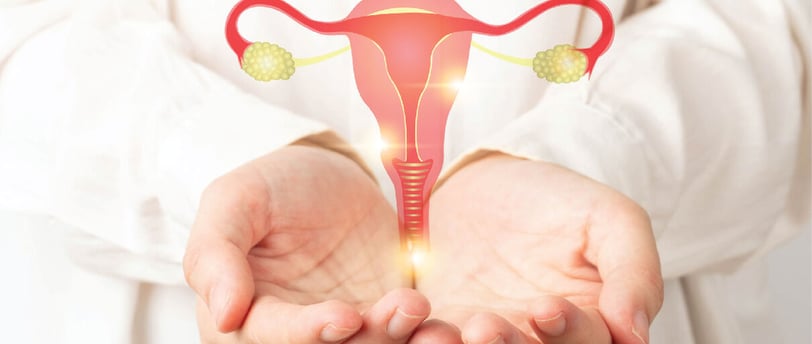Understanding the process of IUI
In this topic we shall discuss the process of Intrauterine insemination and it's effectiveness in achieving pregnancy.
Dr Adnan Jabbar
10/29/20244 min read


Understanding IUI: The Process, Steps, and What to Expect in Intrauterine Insemination
Intrauterine insemination (IUI) is a common and minimally invasive fertility treatment that can assist individuals and couples struggling with conception. The procedure involves placing washed and concentrated sperm directly into a woman’s uterus, increasing the chances of sperm meeting the egg. Unlike more complex treatments like in-vitro fertilization (IVF), IUI is a simpler and often less costly option, making it a popular choice for many. This post will delve into the process, steps, and considerations of IUI to provide a comprehensive understanding for anyone considering or curious about this fertility procedure.
What Is IUI?
Intrauterine insemination, often referred to as artificial insemination, is a fertility treatment that enhances the chances of pregnancy by placing prepared sperm directly into the uterus. This process shortens the journey for sperm to reach the egg, improving the likelihood of fertilization. IUI can be performed with sperm from a partner or a donor, making it a flexible option for diverse family-building scenarios.
IUI is generally recommended for individuals or couples dealing with mild male factor infertility, cervical issues, or unexplained infertility. It is also widely used for same-sex couples and single women who choose to conceive with the assistance of donor sperm.
The IUI Process Step-by-Step
The IUI process is typically divided into several key stages, each of which plays an important role in ensuring the best chances of success. Here is a breakdown of each step involved in an IUI cycle:
1. Initial Consultation and Assessment
Before starting an IUI cycle, patients meet with a fertility specialist to discuss their medical history, fertility challenges, and treatment goals. During this consultation, the doctor will likely order various tests to evaluate the reproductive health of both partners (if applicable). These tests may include:
Blood tests to check hormone levels.
Ultrasound scans to assess the health of the ovaries and uterus.
Semen analysis for male partners to assess sperm count, motility, and morphology.
Once the evaluation is complete and IUI is deemed a suitable option, the doctor will create a personalized treatment plan tailored to the patient’s needs.
2. Ovarian Stimulation and Monitoring
In many cases, fertility medications are used to stimulate the ovaries, encouraging the development of multiple mature follicles (each containing an egg). Common medications for this phase include Clomid (clomiphene citrate) or injectable gonadotropins. This step increases the likelihood of releasing multiple eggs, which enhances the chances of successful fertilization.
Throughout the stimulation process, patients undergo regular monitoring with blood tests and ultrasound scans to track follicle growth and hormone levels. The fertility specialist uses these results to adjust medication dosages and determine the optimal timing for the next steps in the cycle.
3. Triggering Ovulation
When the follicles reach the desired size, usually around 18-20mm, an injection of human chorionic gonadotropin (hCG) is administered to trigger ovulation. Ovulation typically occurs 36-40 hours after the hCG shot, making it crucial to time the IUI procedure precisely to coincide with this window. Accurate timing ensures that the eggs are released and available for fertilization at the moment the prepared sperm are placed in the uterus.
4. Sperm Collection and Preparation
On the day of the IUI procedure, a sperm sample is collected from the male partner or thawed if using donor sperm. The sample then undergoes a process known as “sperm washing,” which isolates the most active and healthy sperm while removing seminal fluid and any potentially harmful substances. The washing process concentrates the sperm into a smaller volume, which is then ready for insemination.
Sperm washing is a critical step, as it not only increases the quality of the sample but also reduces the risk of uterine cramping and discomfort during the procedure.
5. The Insemination Procedure
The insemination itself is a straightforward and minimally invasive procedure. During the IUI:
The woman lies on an examination table, similar to a routine gynecological exam.
A speculum is inserted to allow access to the cervix.
The fertility specialist then inserts a thin, flexible catheter through the cervix into the uterus.
The prepared sperm sample is carefully injected into the uterus.
The procedure typically takes only a few minutes and is relatively painless, although some women may experience mild cramping or spotting afterward.
6. Post-Procedure Care and the Two-Week Wait
After the insemination, patients are usually advised to rest briefly in the clinic, but they can resume their normal activities almost immediately. Following the IUI, there is a two-week waiting period before a pregnancy test can determine if the procedure was successful. This waiting period can be emotionally challenging, so it’s important to have a support system in place and to avoid activities that might add additional stress.
During this time, it’s essential to avoid certain medications and strenuous exercise, as advised by the doctor, to create the best environment for potential implantation.
Success Rates and Considerations
IUI success rates depend on several factors, including the age of the patient, underlying fertility issues, and whether fertility medications were used. On average, the success rate for IUI per cycle ranges between 10-20%, but multiple cycles can increase the overall chance of pregnancy. It’s essential to have realistic expectations and to understand that IUI may require several attempts before achieving success.
Many patients combine IUI with ovulation-stimulating medications to improve outcomes, but the fertility specialist will recommend the most appropriate approach based on individual circumstances.
Advantages and Disadvantages of IUI
Understanding the benefits and limitations of IUI can help patients make an informed decision about whether it’s the right choice for them:
Advantages:
Less invasive and more affordable than IVF.
Minimal recovery time with the ability to resume daily activities.
A simpler process with fewer medications and procedures compared to IVF.
Disadvantages:
Lower success rates compared to IVF, especially for older women or those with severe infertility issues.
Risk of multiple pregnancies if multiple follicles are released.
Emotional toll due to the need for multiple cycles in some cases.
Final Thoughts: Is IUI Right for You?
IUI is a promising and accessible option for individuals and couples facing mild infertility issues or those looking for a less invasive alternative to IVF. By understanding the step-by-step process of IUI, patients can feel more prepared for the journey and have realistic expectations about the outcomes. Consulting a fertility specialist is the best way to evaluate personal circumstances and decide whether IUI is the most suitable choice for your path to parenthood.


